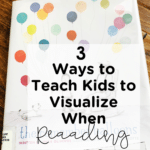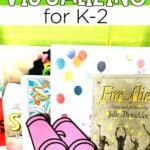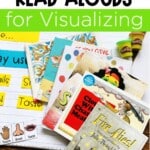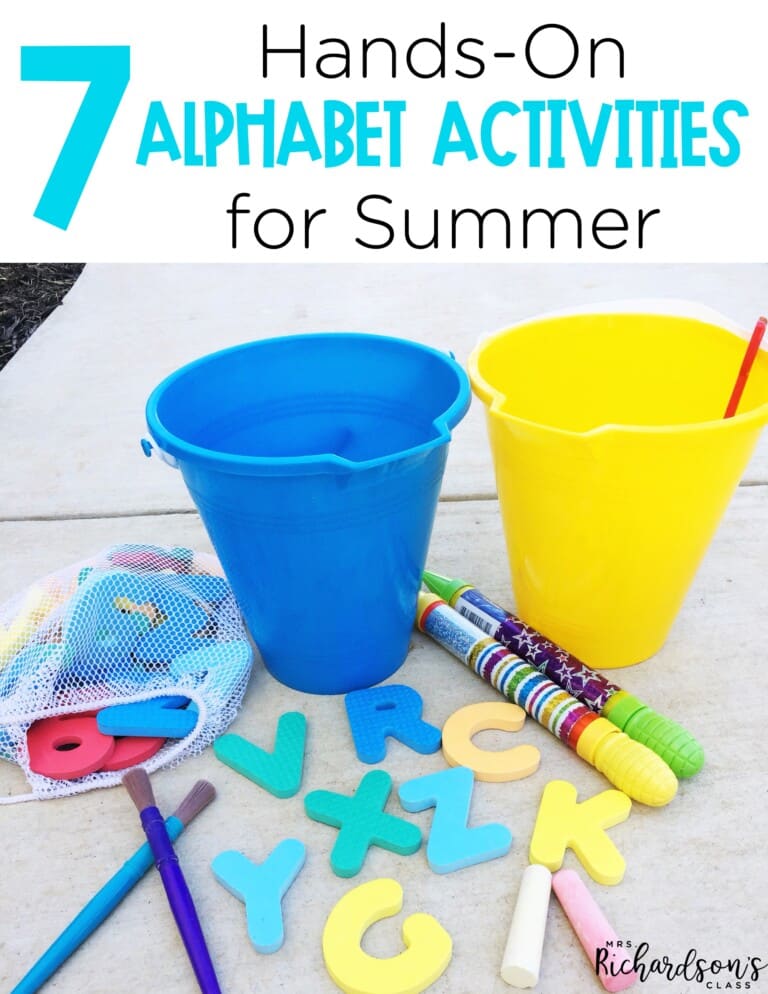


Have you ever read a book, turned the page and saw the picture, and thought “That’s not at all what I was picturing in my mind?” This has happened to me so many times! That’s visualizing. When you use the words in a story or book to make a picture in your mind, you are visualizing. Teaching students to use the visualization reading strategy is an important skill for them to use for reading comprehension.
I always told my students in the classroom, “Right now you get to make the movie version in your mind of what we are reading.” They loved thinking of it that way! Let’s talk about what it is today and some ways to teach it in your classroom!
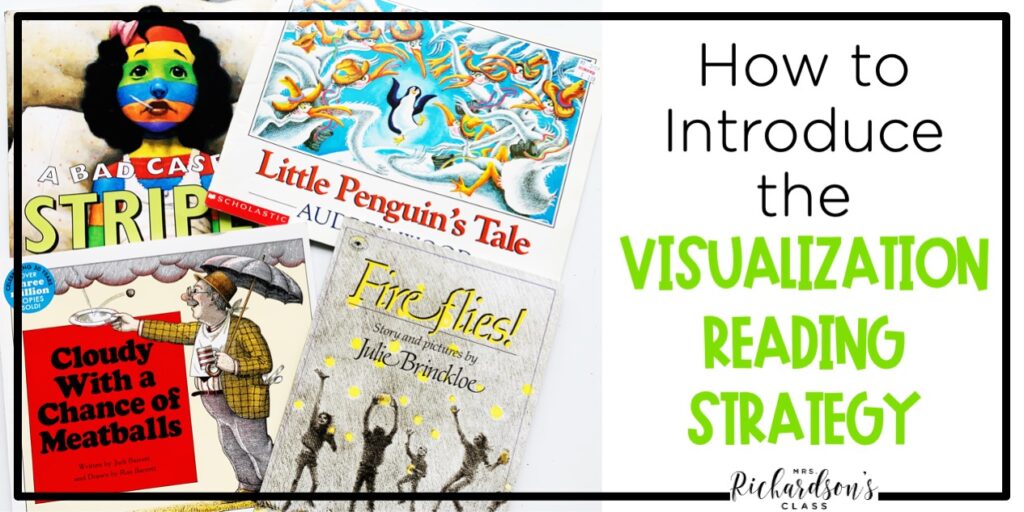
Visualizing is one of the core reading skills that helps students with their overall reading comprehension. When a student is able to visualize what is going on in a story, we know they are comprehending. We want them to make mental images as they read and check to make sure that what they see in their mind matches what the author is saying in the text.
As students move up in their reading levels, they begin to read more complex texts like chapter books. In chapter books, the text is more important than the pictures. Additionally, the amount of pictures in books becomes less.
Now students have to be able to see in their mind what is happening in the story because there are no pictures in the book. Teaching them how to visualize now sets them up for success later.
First, I often introduced visualizing to my students by having them close their eyes. Then, I would tell them different scenario stories with lots of detail in them (like a friend buying a new house, getting a new puppy, etc). Before telling them the story, I told them to picture in their minds what they saw as I was telling the story. Afterward, we would all share what mental image we had in our minds based on what we had heard.
In the beginning, I spend lots of time modeling it to them using several different read alouds. I would model for them what I was seeing in my mind and teach them the sentence stems we would use.
Explicit modeling prepares them well for when it is their turn to give it a try!
Another way to practice visualizing is to read a book aloud to them and not show them a few of the pictures. I would tell them I wasn’t going to show them the pictures on that page, but instead, they were going to make the picture in their mind. I told them to pay careful attention to the words and details in the book.
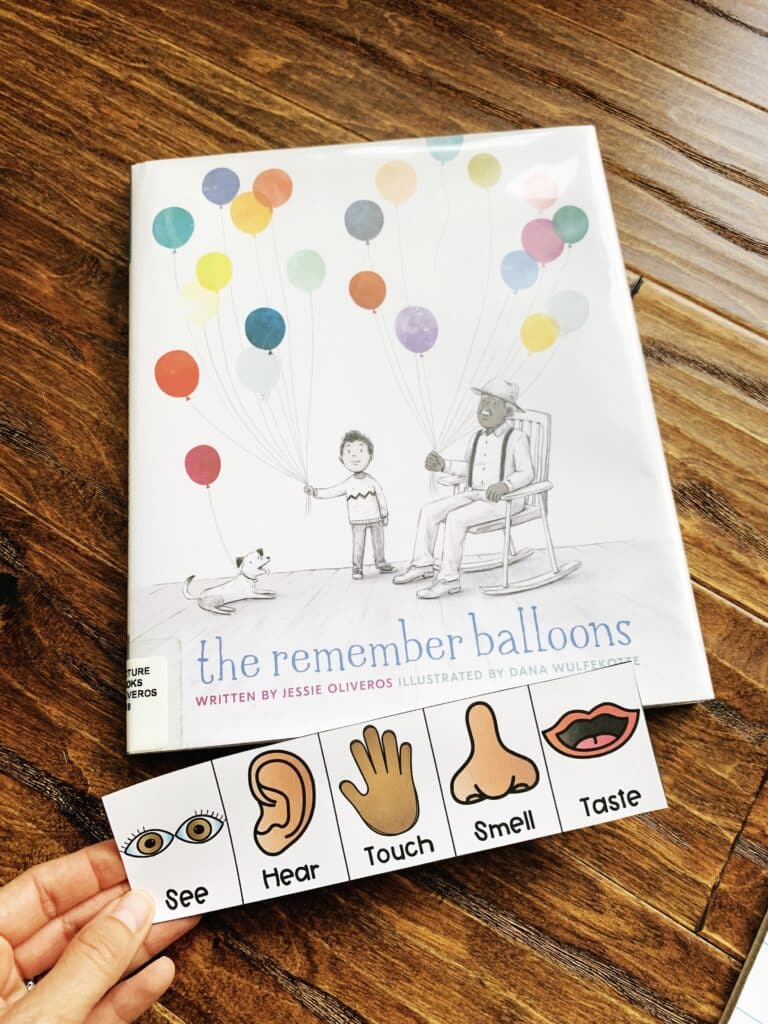
Next, we would share what we saw in our minds with a partner or aloud as a class. It was always fun to see how our mental images were similar, but could also be different.
There are so many fun books to use when teaching visualizing! Look for books that have descriptive language and are relatable to the students. That way they will be able to create a mental image in their mind. Here are a few of my favorites to use for teaching visualization for kinder through second grade:
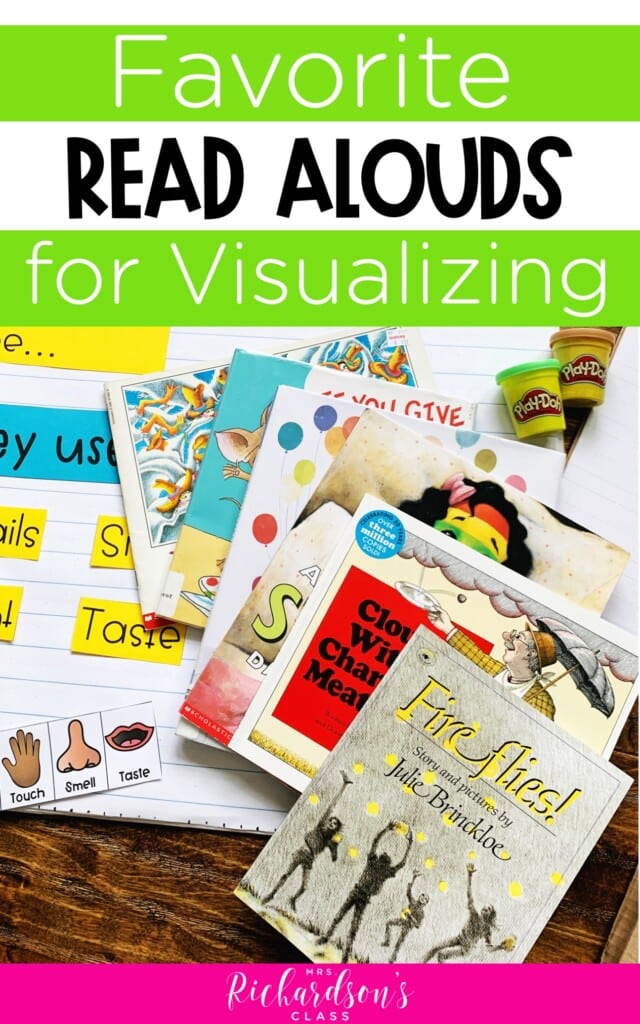
Make sure you stop to model visualizing for them several times in your read aloud, and then let them have a try. Make sure to explicitly teach the sentence stems you want them to use to give them an example of the language you want them to use to talk about visualizing.
Teaching students to visualize is fun because it can be hands-on. One of my favorites was to have students bring their readers’ notebooks and put three to four sticky notes on a page. At different points of our read-aloud, I would have them stop and sketch what was in their mind on their sticky note. We then would share our mental images with our neighbors.
We did this activity with the book Fireflies by Julie Brinckloe.
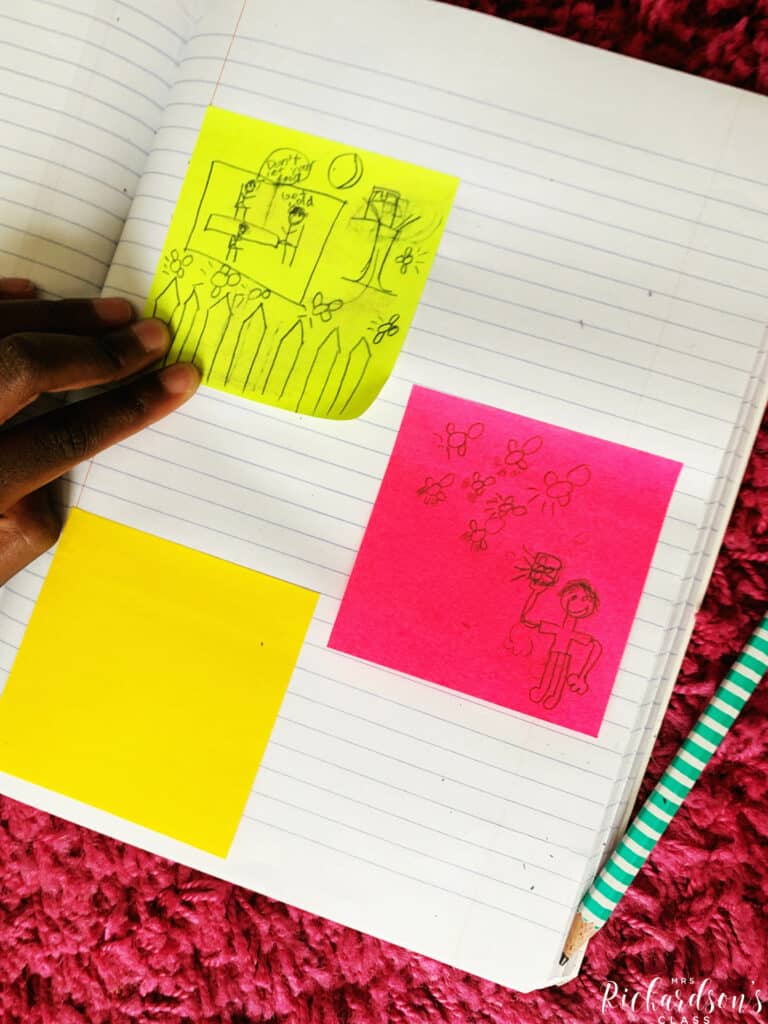
Another way to teach the visualization reading strategy is to have students bring their whiteboards and dry erase markers to the carpet for read aloud time. They could stop and draw on their whiteboard their mental images and share them with a partner. My student’s engagement always went up when they got to use their whiteboards on the carpet.
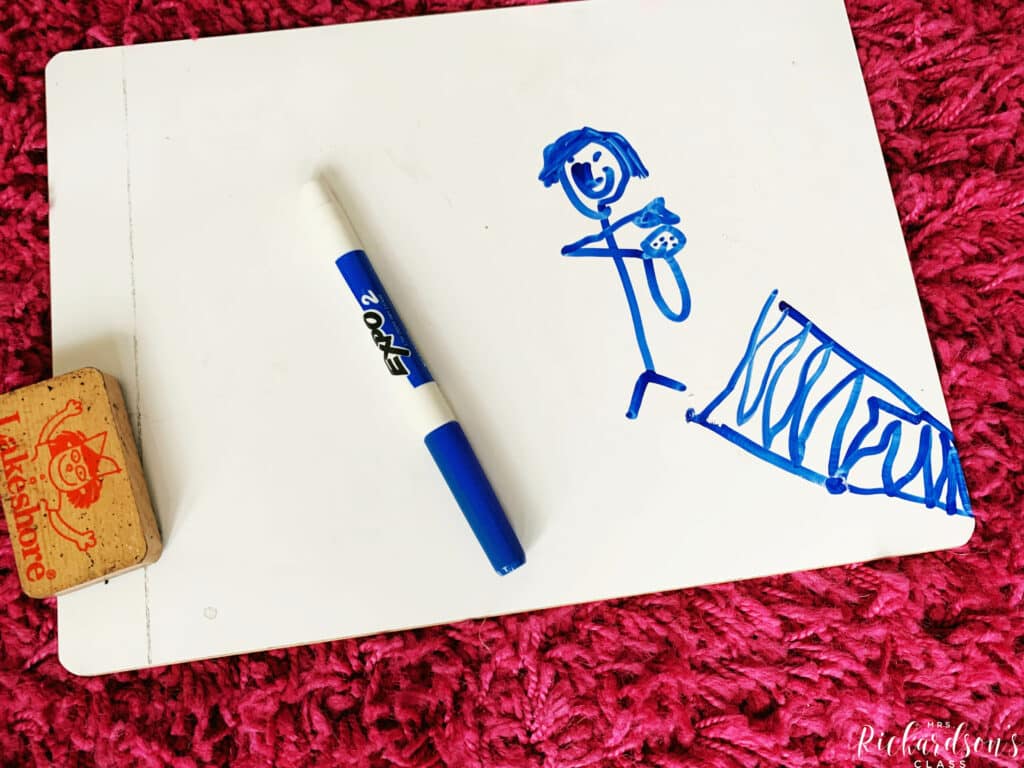
Interested in lessons already made that teach visualization to your students? Looking for more ideas and ways to teach this skill? I can help you! We have a growing bundle of interactive read aloud lesson plans that focuses on visualization, making connections, and other reading comprehension skills!
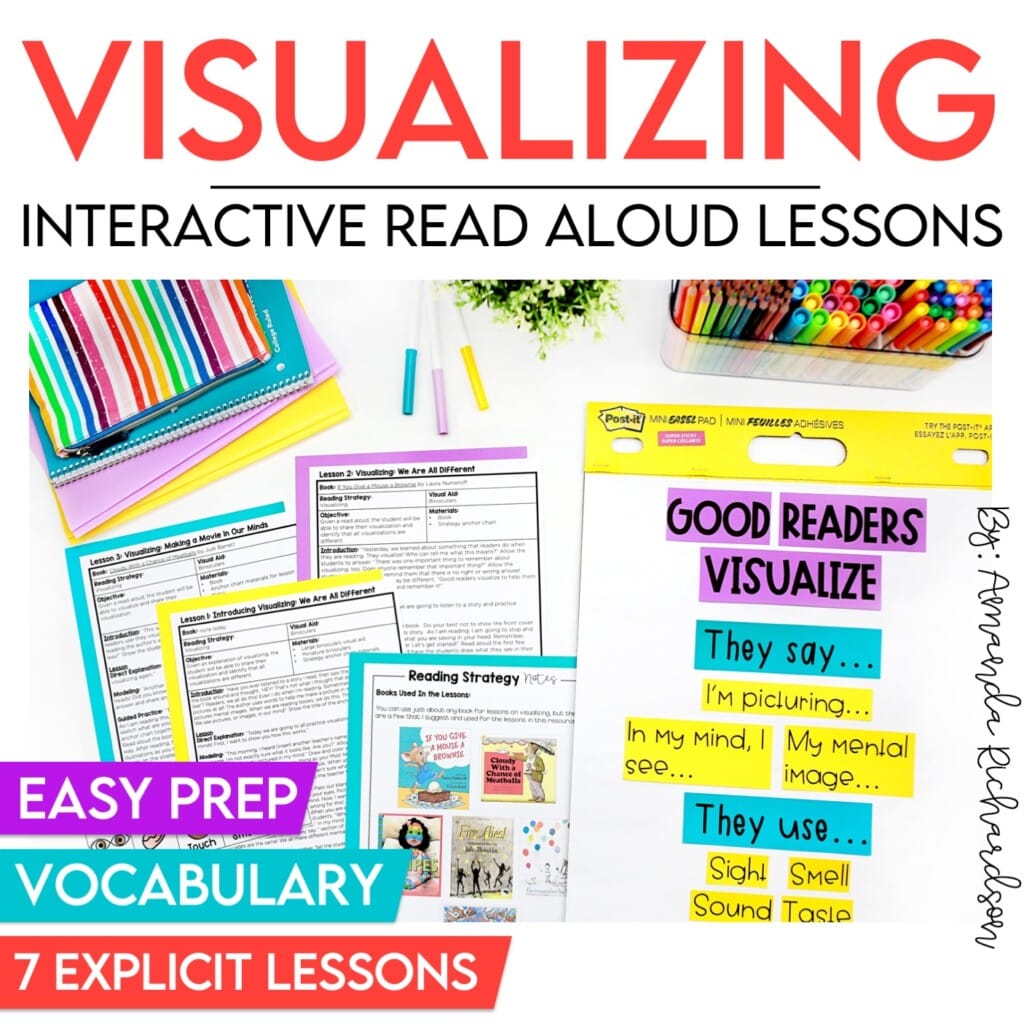
The Visualization Interactive Read Aloud Resource has everything you’ll need to teach this strategy to your students. It has:
Do you want to make the most of your interactive read alouds, but find yourself struggling to find books, write lessons, and come up with activities? Do you want to teach your readers to think deeply about the text and develop strong reading strategies and skills?
If so, ‘d love to introduce you to The Read Aloud Library! If you want 20 interactive read aloud lessons and activities delivered to you each month, you’ll want to check out The Read Aloud Library.
With your membership, each month you’ll receive:
Click HERE to learn more about The Read Aloud Library and join hundreds of other teachers!

Want to use the latest research to boost your readers during small groups? This FREE guide is packed with engaging ideas to help them grow!

I’m a K-1 teacher who is passionate about making lessons your students love and that are easy to implement for teachers. Helping teachers like you navigate their way through their literacy block brings me great joy. I am a lifelong learner who loves staying on top of current literacy learning and practices. Here, you’ll find the tools you need to move your K-2 students forward!


| Cookie | Duration | Description |
|---|---|---|
| cookielawinfo-checkbox-analytics | 11 months | This cookie is set by GDPR Cookie Consent plugin. The cookie is used to store the user consent for the cookies in the category "Analytics". |
| cookielawinfo-checkbox-functional | 11 months | The cookie is set by GDPR cookie consent to record the user consent for the cookies in the category "Functional". |
| cookielawinfo-checkbox-necessary | 11 months | This cookie is set by GDPR Cookie Consent plugin. The cookies is used to store the user consent for the cookies in the category "Necessary". |
| cookielawinfo-checkbox-others | 11 months | This cookie is set by GDPR Cookie Consent plugin. The cookie is used to store the user consent for the cookies in the category "Other. |
| cookielawinfo-checkbox-performance | 11 months | This cookie is set by GDPR Cookie Consent plugin. The cookie is used to store the user consent for the cookies in the category "Performance". |
| viewed_cookie_policy | 11 months | The cookie is set by the GDPR Cookie Consent plugin and is used to store whether or not user has consented to the use of cookies. It does not store any personal data. |
